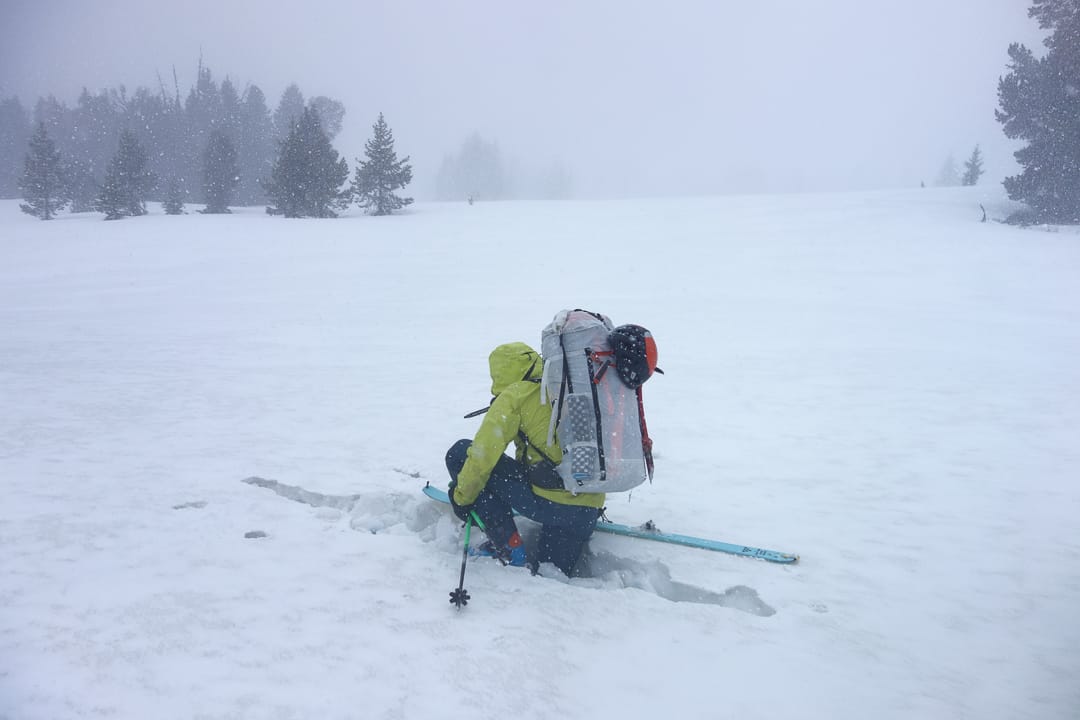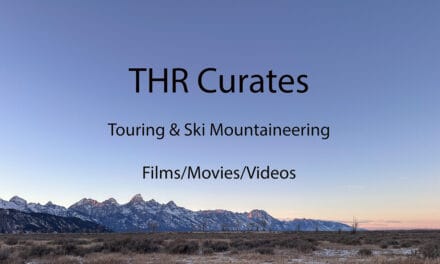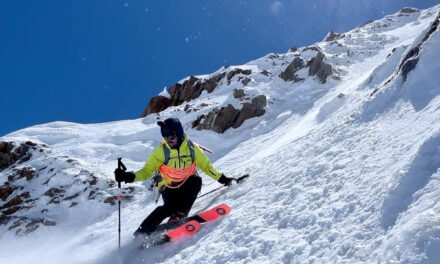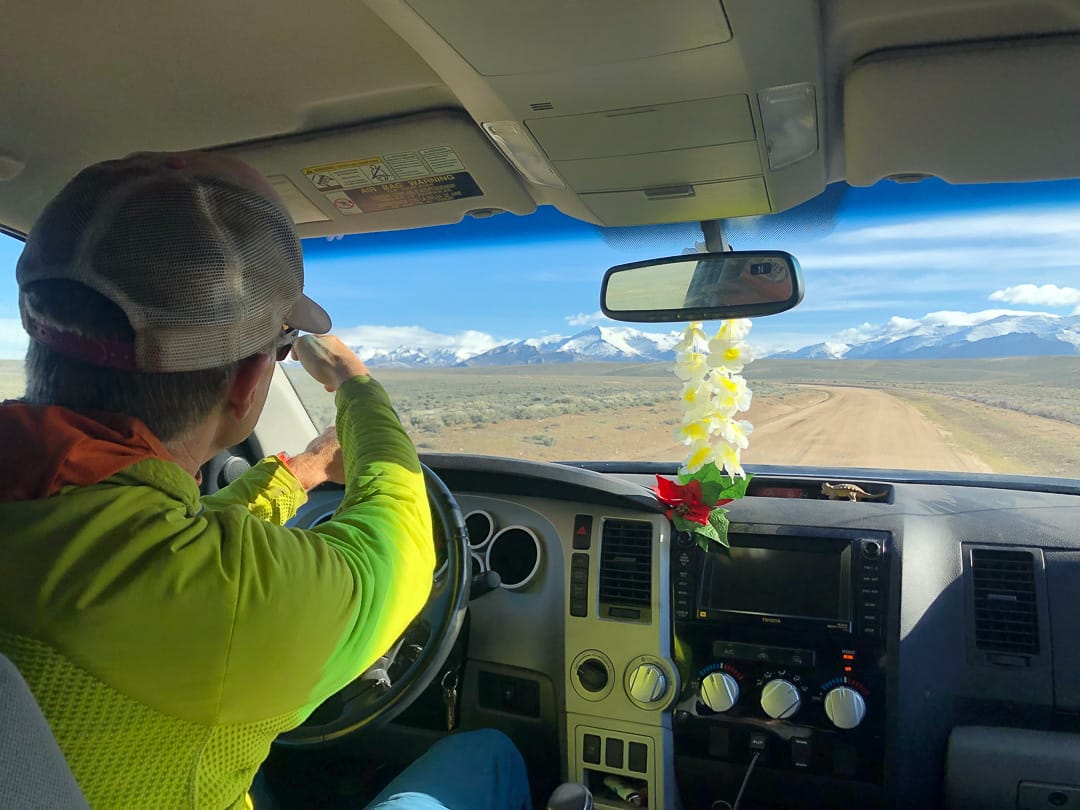
This friends, is what it looks like with the ski traverse about to begin. Sunshine. Aloha. And Brian Parker pointing at landmarks. There is 100% no thought of isothermal snow. Photo: Kelly Cordes
Sliding across the snow with heavy packs was smooth going until the isothermal snowpack made it otherwise. We respect the isothermal snowpack, but also loath it.
The prefix “iso” means equal or the same. We often refer to an isothermal snowpack in snow science and the backcountry enthusiast’s lexicon. You guessed it, an isothermal snowpack is a snowpack with an equal, or uniform, temperature throughout.
Our concern with isothermal snowpacks is usually in the spring when warmer temperatures generally prevail. There are a few factors at play that can promote an isothermal snowpack. Nights when cloud cover is present may keep temperatures warmer, and by default, the air over the snowpack is warmer, too—this scenario likely prevents a refreeze. (That cloud-covered night sky is likely keeping temps at or above freezing, due to lack of radiational cooling.) Or maybe you’re in the montane where the tree canopy acts as a thermal insulator. The diurnal temp swings might be mitigated, possibly inhibiting a nightly freeze.
According to the Avalanche.org glossary:
“Isothermal conditions are most common at 0°C, when water can exist in its gas, liquid, and solid forms. In other words, isothermal snowpacks at 0°C can be completely frozen, incredibly wet, or somewhere in between. Unfortunately, the term is commonly mis-applied to only describe wet, weak and unsupportable snowpacks. In reality, the loss of strength of snow has less to do with temperature and more to do with higher water contents.”
Absent a hard freeze or a pre-existing firm crust on the upper snowpack makes for a less supportive surface. And, over time, water near the snowpack’s surface percolates downward, weakening the snowpack and creating a column of snow of the same temperature, or isothermal snow.
Breaking through any semblance of supportive surface into isothermal snow is to wallow in a morass of 2mm ball bearings. The wallowing is not relaxing and more of the helpless variety.
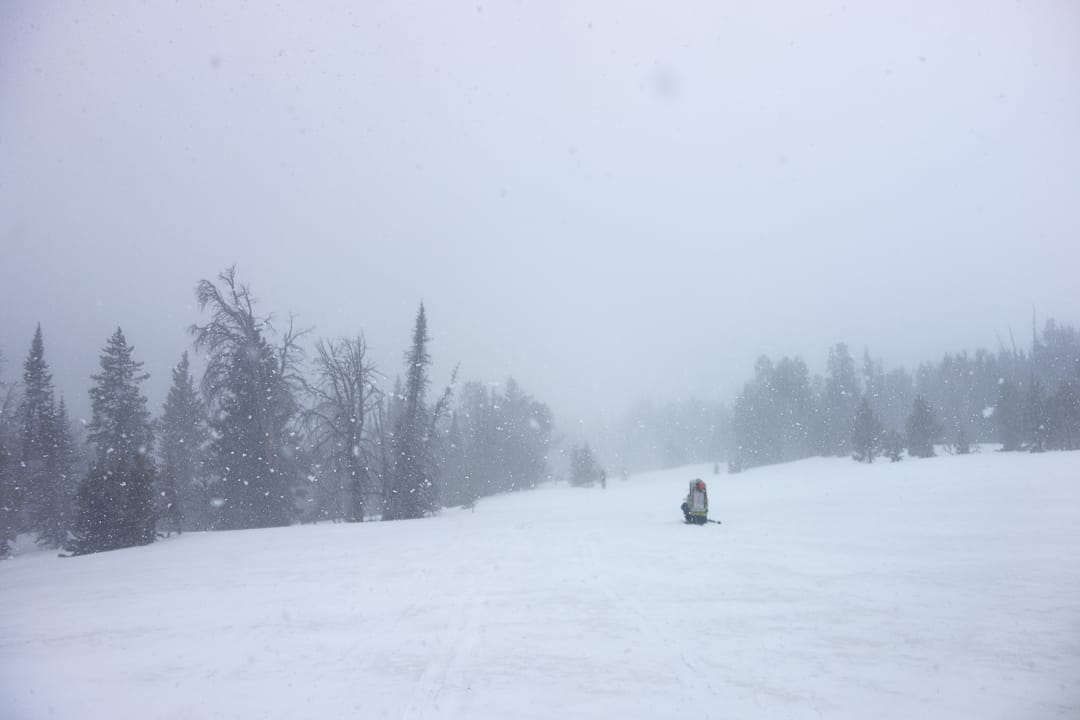
From a distance, this is what I look like as the wallowing begins. I’m certain, had we been capturing audio, there would have been some chuckling behind the camera lens. Photo: Kelly Cordes
Isothermal in our Future
In the spring, we’ll have a different story about seasonal avalanche hazards relating to warming and isothermal snowpacks. That’s when paying attention to solar radiation, aspect, and time of day (as the sun rises and arcs from east to west) should become part of the risk assessment, as the snowpack and its moisture content can change quickly with more direct solar radiation. In short, beware of wet snow avalanches.
Isothermal properties can wreak havoc on the most benign terrain, too. A small group of us are starting to think about this now. Let’s run through the scenario. We’re planning a longish traverse in a range prone to isothermal snow in May. A physical characteristic that is not so unusual, and as noted, a characteristic that might be alarming come spring on the wrong slope at high noon, but we’re not thinking of avalanches here.
Imagine the slow and steady pace of a traverse. You enter the range, and in lower elevations with a weaker freeze, you might pass through a few miles of breakable crust and a dreaded isothermal stretch of snow. As you progress deeper into the hills, gaining elevation and primarily working up southerly aspects and down northerly aspects (we are trending south to north), the thought of isothermal-dread (the wham bam sensation of gliding along blissfully and dropping a foot or two or three into a collapsing snowpack) is far from our minds.
We’re mostly concerned about our exit from the range and a relatively long slog through sage-steppe country connecting us to the next mountain range.
One of the best aspects of planning a trip, outside of the trip, is, in fact, the planning. For us, a group separated by 600-900 miles and a time zone, it’s a weekly, if not daily, excuse to communicate. And we’ve been communicating on how to prepare for, deal with, and suffer through the inevitable mayhem and buzz kill that is traversing through an isothermal zone.
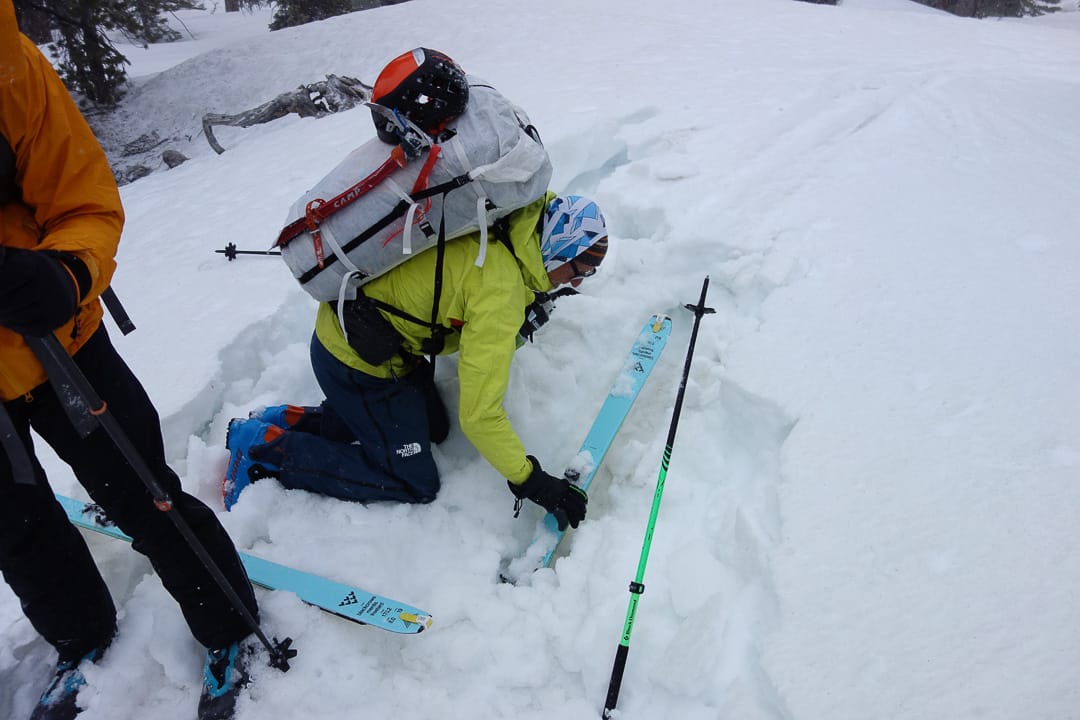
Just to keep the ego in check—here’s a close up of the wallowing. There seems to be a lot of bystanders. Photo: Kelly Cordes
Our last experience with isothermal dread was on a traverse exit in 2022—we were roughly 15 miles or so from our pick-up. Of those 15 miles, I recall maybe three to four miles of a punchy, every step I could break through, cautious, inefficient, ski-sliding shuffle. It’s physically and mentally taxing, let alone a regression to a snail’s pace. I suppose the slow pace is not so bad, considering the alternatives—torn ligaments and a snapped ski.
Now, we are looking at roughly 15-20 miles of potentially energy-sapping isothermal conditions on our proposed route. (Update—I’m told to add potential mud in addition to the isothermal snow. 🙂 Considering this issue from afar, in front of a computer, it doesn’t seem too bad.
Our time will come.

